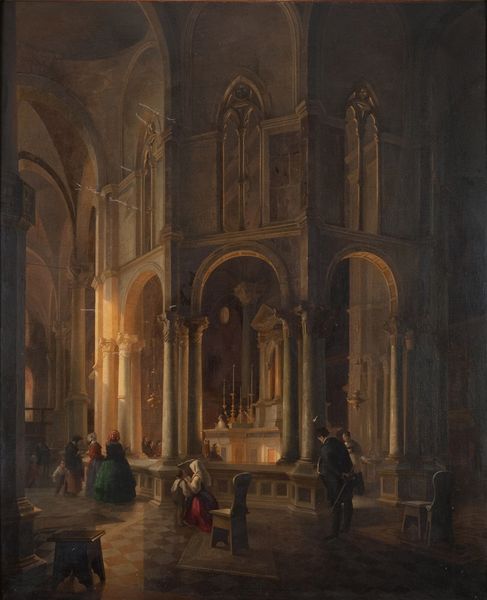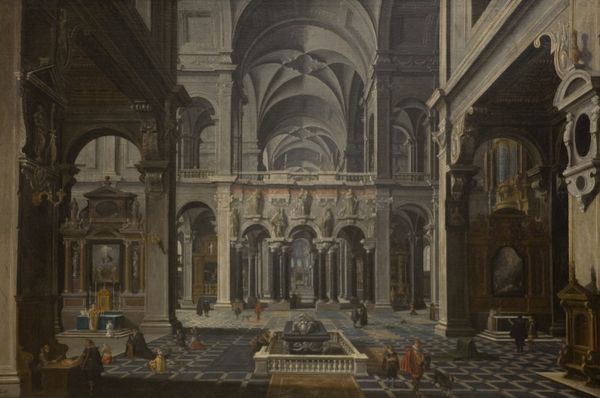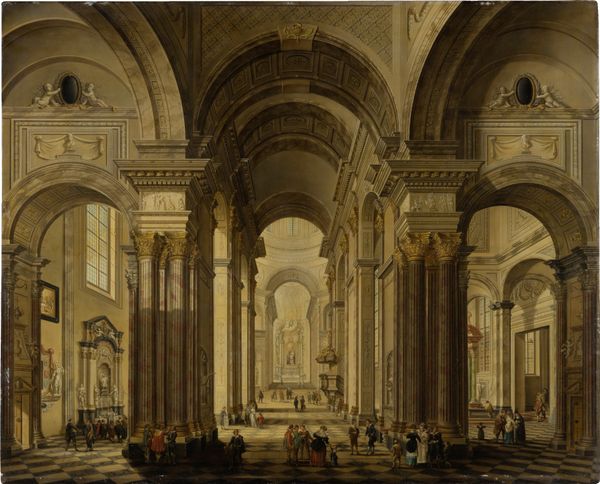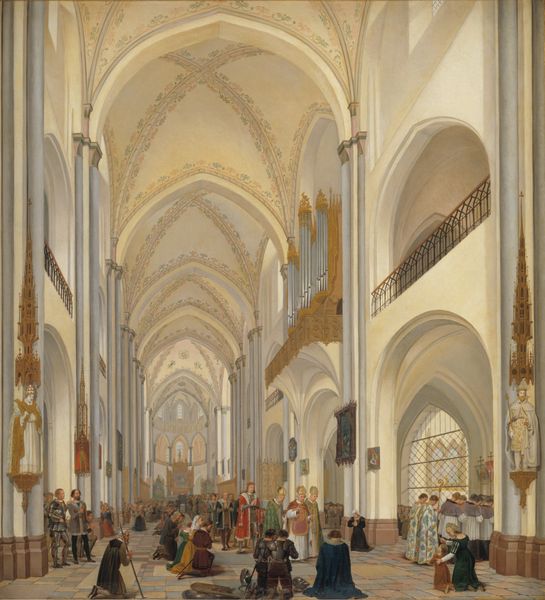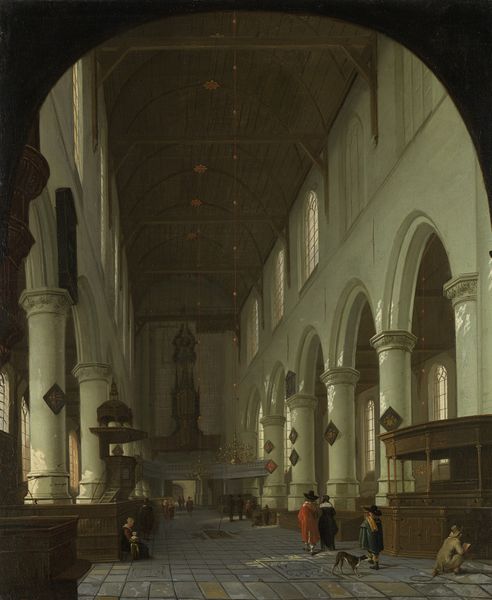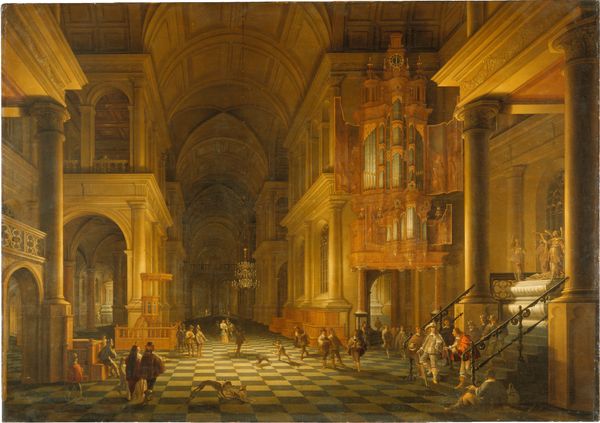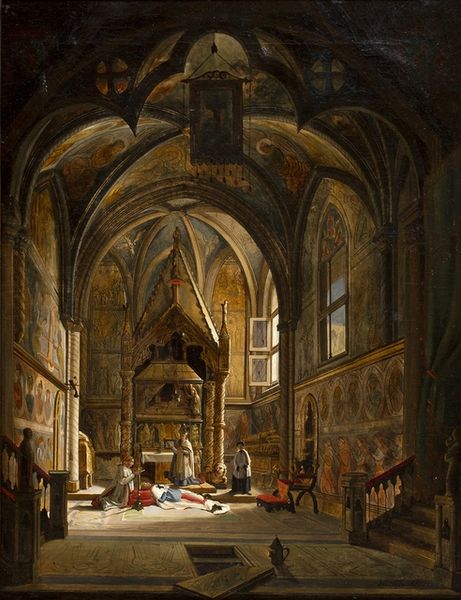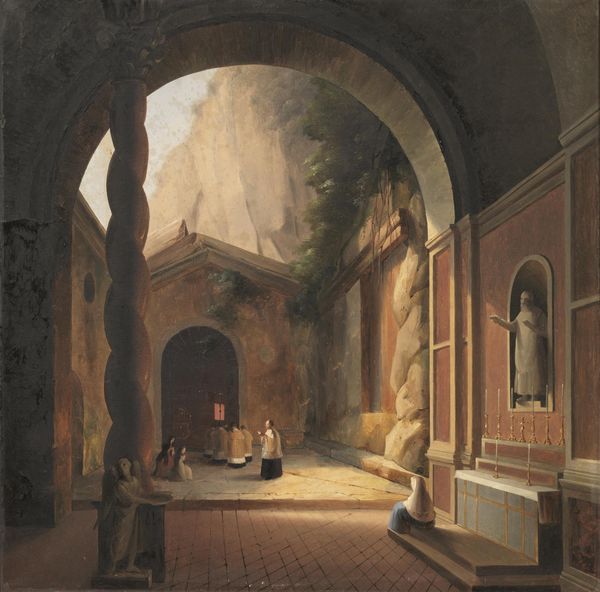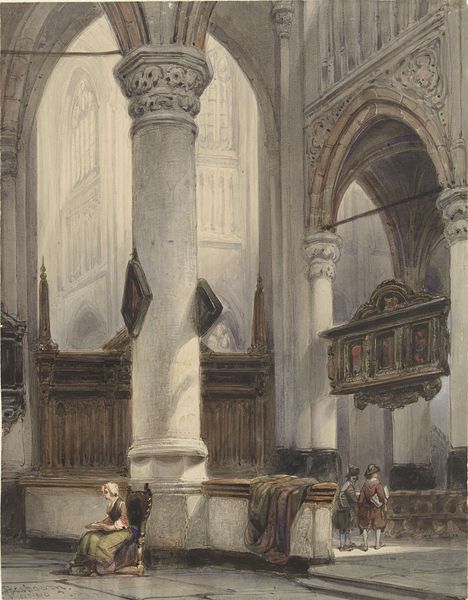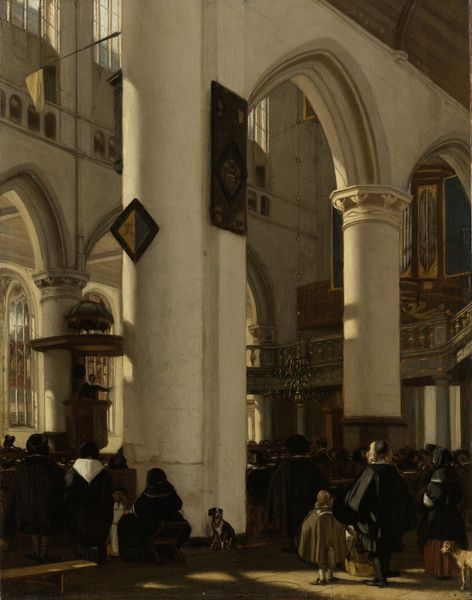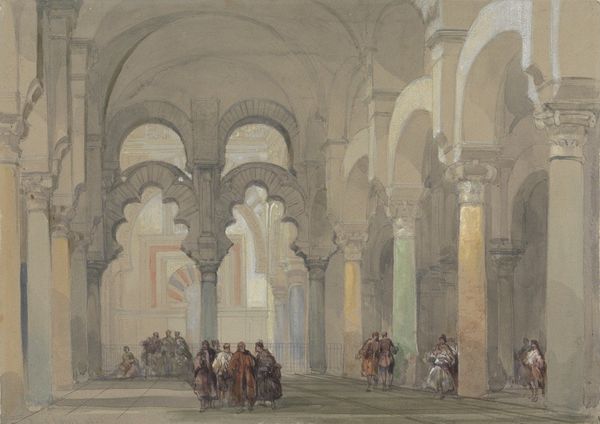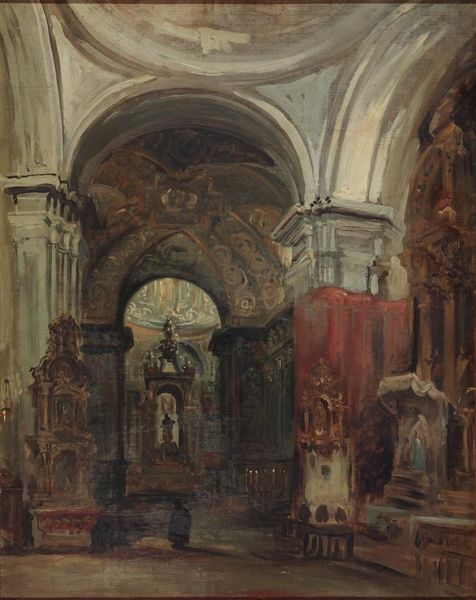
painting, oil-paint, canvas
#
painting
#
oil-paint
#
landscape
#
canvas
#
classicism
#
romanticism
#
genre-painting
#
watercolor
Dimensions: 78 cm (height) x 70.5 cm (width) (Netto), 93.8 cm (height) x 86 cm (width) x 8.3 None (depth) (Brutto)
Editor: So, here we have Martinus Rørbye’s "Interior of the Capella Palatina in Palermo, Italy" from 1842, rendered in oil on canvas. The light streaming in immediately captures my attention. What do you see in this piece, beyond the obvious beauty of the architecture? Curator: What I find particularly striking is the intersection of power and faith embedded within this space. Rørbye painted this during a time of growing national consciousness in Europe, and religious architecture often became a canvas for projecting cultural identity. This chapel, a blend of Byzantine, Norman, and Arab styles, speaks volumes about Palermo's complex history of conquest and cultural fusion. Editor: Fusion, definitely. I see all those cultural elements represented in the mosaics, arches, and even the clothing of the figures. How does that translate into identity and power? Curator: Think about who commissioned this chapel originally – the Norman kings in Sicily, who strategically incorporated elements of the existing cultures to legitimize their rule. Rørbye, in choosing to depict this interior, is also participating in a discourse about the “exotic” Mediterranean, often viewed through a colonial lens by artists from Northern Europe. Consider, also, who is given prominence in the painting, and who is relegated to the margins. Editor: That makes me reconsider the kneeling woman in the foreground. Is Rørbye perhaps framing her within a pre-existing, and maybe limiting, narrative of Sicilian piety? Curator: Precisely! How might her agency be diminished or amplified through his artistic choices? By understanding the social and historical context, we move beyond a purely aesthetic appreciation and start to analyze the power dynamics at play. Editor: It's like peeling back the layers of history embedded in the paint itself. Curator: Exactly. It transforms the way we look at art. Always consider context, and the conversations the art opens up, beyond the beautiful picture. Editor: I'll certainly carry that forward! Thanks for making me rethink my first impressions.
Comments
No comments
Be the first to comment and join the conversation on the ultimate creative platform.
